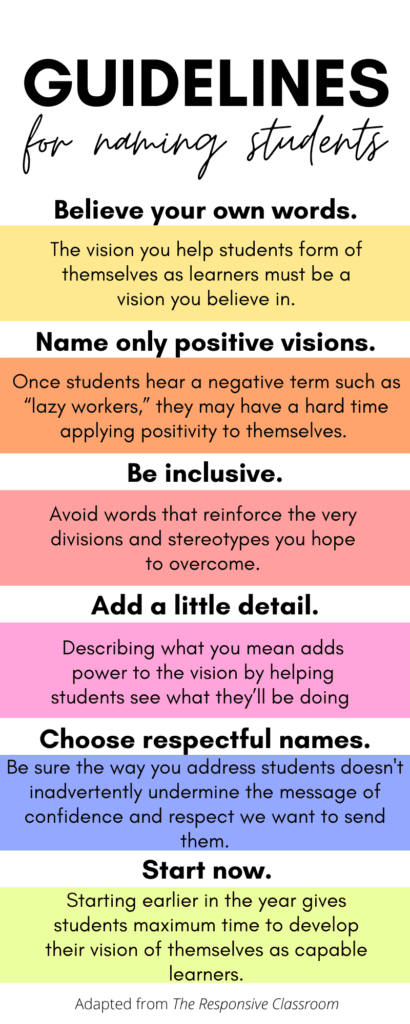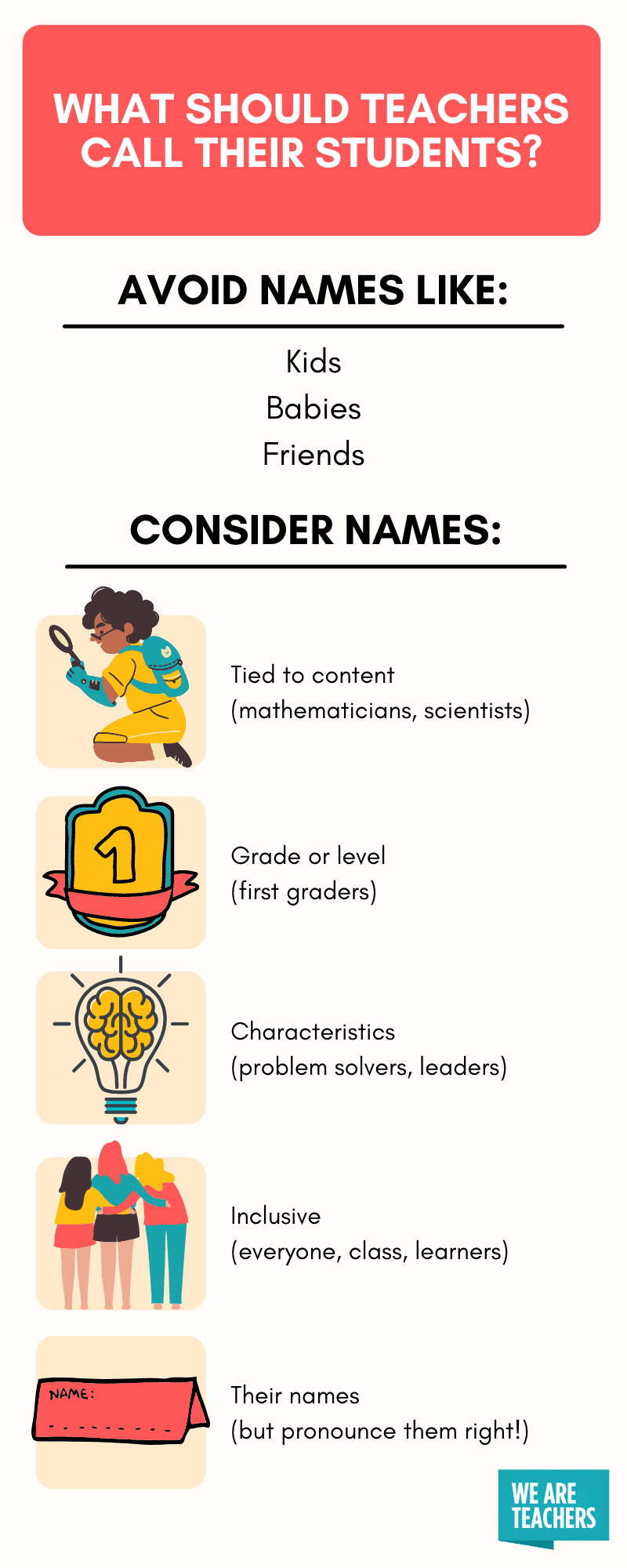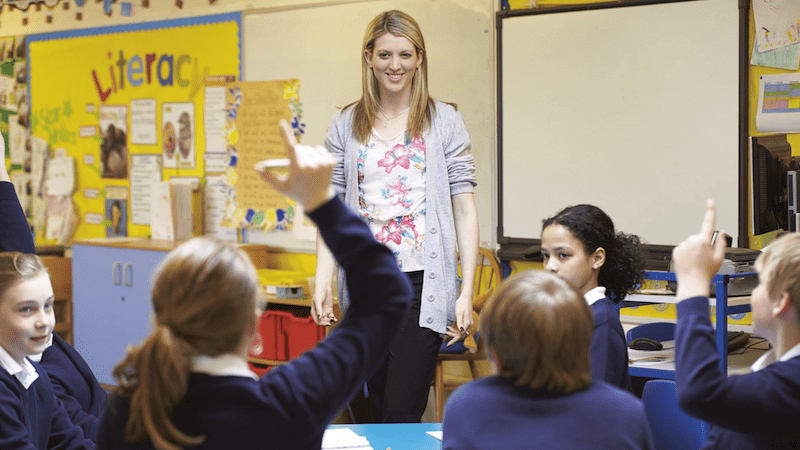Babies, kids, scholars, minions, the list goes on. There are dozens of names that teachers call their students, but are certain choices better than others? Take a spin around the Internet and you’ll find LOTS of opinions on this subject. So what’s a teacher to do? A few things to consider:
Names to reconsider:
Kids or Babies
We think of the term kids as affectionate and a reflection of our love and commitment to our students. After all, how many times have you been called mom or dad by a student? However, I recently learned that the term “kids” has negative connotations in other languages and cultures. Depending on the context, it may be considered derogatory rather than a term of endearment. The case against babies is that it can seem belittling and can sound like their potential is overlooked.
Ladies and Gentlemen or Boys and Girls
Teachers should be careful with “ladies and gentlemen” and “boys and girls” as well because they aren’t gender-neutral and therefore not inclusive. Gender is not students’ defining attribute. In fact, here are 7 Tips for Creating a More Gender-Inclusive Classroom.
Friends
I struggle with this one myself because it is a really common term for students, but are teachers really students’ friends? Though we want to build rapport with students, ultimately teachers are authority figures. It can feel inauthentic and confusing.
What to say instead:
The Responsive Classroom gives these helpful guidelines for naming students:

Beyond just names, we always want to keep students at the forefront using impactful language. For example, instead of “Good morning boys and girls, today I prepared a great division lesson for you!” try, “Good morning mathematicians, today you will be collaborating on division strategies!”
Consider names based on:
Content
Titles that mirror the subject such as mathematicians, scientists, historians, researchers, or musicians.
Grade or Level
Labeling students based on their current position, grade level, or year like middle schoolers, first graders, or seniors.
Characteristics
Names that reflect actions and mindsets you want your students to internalize and that promote learning. For example, problem-solvers, collaborators, or leaders.
Inclusive Titles
Try everyone, class, learners, or team. Or, here in the south, we say ya’ll.
Their names
There is nothing wrong with sticking to students’ real names. Just make sure to pronounce them correctly. If you’re not sure, ask. Taking the time to learn the right pronunciation shows you care and value their identity. Here are 23 Books to Teach Kids About the Importance of Names.

The bottom line is, whatever you choose to call your students, keep it positive, inclusive, and respectful. As teachers, we want our students to build a positive image of themselves as capable and engaged learners, and words matter.

